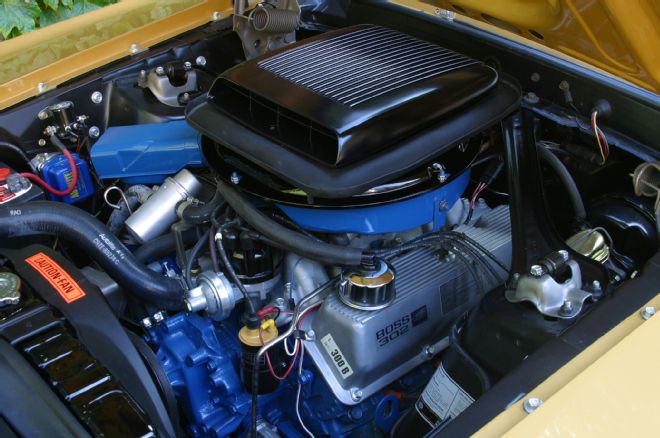
Mention the word Boss to a group of Ford fanatics and more than likely the first thing that pops into their mind is “Boss 302.” The reputation and popularity of the Boss 302 is well deserved, after all it did best the mighty Bow Tie boys in 1970 by winning the coveted Trans-Am championship. A big part of the racing success can be attributed to the amazing little engine. Rated at just 290 hp, the Boss 302 was sporting revolutionary new, canted-valve Cleveland heads. The combination of minimal displacement and massive head flow produced a race-ready, high-rpm screamer that absolutely excelled on the track. Toss in what might be the best looking Mustang body style ever, penned by no less than Larry Shinoda himself, and it is easy to understand the popularity of the Boss 302.
Capitalizing on the success of the Boss name, Ford applied it to their new 351-powered Mustang in 1971. After the SCCA lifted the ban on de-stroking production engines, both Ford and GM stepped up displacement on the street versions of their Trans-Am-legal Boss Mustangs and Camaro Z/28s. With the popularity of the Trans-Am series on the decline and emissions regulations on the rise, the new Boss fought an uphill battle for recognition. Despite the popularity of the smaller 302, an argument can be made that the later Boss 351 engine might just be the high watermark of all muscle car small-blocks. Having previously tested every one of the legendary factory Chevy muscle car mouse motors (LT-1, L76/L84, and DZ302) for our sister title, Super Chevy magazine, we know the Boss 351 out-powers them all. The question now is how does it compare to the legendary Boss 302?
The best way to illustrate the power difference between the Boss 302 and the Boss 351 was to build one of each, then subject them to the rigors of the dyno. A glance at the spec sheet indicates the most obvious difference being the stroke change (from 3.0 to 3.5 inches) that increased displacement. Our data indicates that the Boss duo shared the impressive canted-valve Cleveland heads and had identical cam specs, but the Boss 351 featured a slightly higher static compression ratio (11.0:1 versus 10.5:1). In terms of induction systems, both Boss engines were equipped with aluminum high-rise, dual-plane intake manifolds, but the two differed in carburetion: the Boss 302 was equipped with a 780-cfm Holley while the 351 relied on an Autolite 4300-D carburetor. Would the extra displacement and compression in the 351 offset the natural rpm ability of the smaller Boss 302?
Before getting to the dyno we had to overcome a few obstacles associated with these builds, namely the cost and availability of genuine parts. Building either Boss would be an expensive proposition, but building both would be all but insurmountable. It is important to note that substitutions implemented in the build had little, if any, effect on power production. On the 302, the Boss block, steel crank, and 5.15-inch rods were replaced by a late-model block, cast crank, and 5.4-inch rods, but the pseudo Boss did retain the critical 10.5:1 pistons. This short block was topped with a set of 1970 Boss 302 heads that featured 58cc chambers and a 2.19/1.71 valve package. The Boss 302 was finished up with a factory Boss 302 intake (on loan from Holman Moody), but we substituted a Holley 750-cfm HP carburetor for the expensive factory 780-cfm version (which is available through Pony Carburetors). The Boss 302 was run with a set of 1 7/8-inch Hooker headers, a Meziere electric water pump, and an MSD distributor.
Lacking a standard-bore Cleveland block, we treated a 351 2V to a 0.030-over cleanup. The factory cast crank and rods were in excellent shape and were combined with a set of 11.0:1 Cleveland pistons from Probe Racing. The small-chamber, 4V, D1AE heads shared the exact same combustion chamber, 2.19/1.71 valve size, and port volume (and flow) as the Boss heads and lacked only the adjustable valvetrain. The folks at L&R Automotive milled and drilled the rocker pads to accept studs and guideplates required for the Schneider solid-lifter cam. As with the 302, the induction presented a hurdle on the 351. The aluminum Boss intake manifold was all but impossible to come by for the test so we substituted an otherwise identical factory iron version in its place. According to our data, the Boss intake was just an aluminum version of the cast-iron Ford manifold. We did replace the (now) $4,000, 4300-D Autolite carburetor with the same Holley 750-cfm HP carb used on the Boss 302.
Obviously there are those (especially on the Internet) that will dismiss the results due to the minor alterations that we did, but rest assured that none of the changes greatly affected power. Since neither carburetor represented much of a restriction on these engines, any power loss would come from jetting and/or metering supplied by the factory tune. Since we optimized both jetting and ignition timing, these differences were eliminated. Run in this manner, the Boss 302 produced peak numbers of 374 hp at 6,700 rpm and 324 lb/ft of torque at 4,300 rpm. Stepping up to the larger Boss 351 resulted in peak numbers of 383 hp at a slightly lower 6,200 rpm and 391 lb/ft of torque at 4,000 rpm. As a testament to the Boss 302’s high-rpm nature, the peak horsepower numbers differed by just 9 hp, but the torque curve tells the real story. Down at 3,100 rpm, the larger Boss 351 offered an additional 90 lb-ft of torque, and carried a sizable advantage all the way through 6,500 rpm. Offering an unbeatable combination of compression, displacement, and the amazing Cleveland heads, the 1971 351 showed its little brother (and every other small-block) once and for all who was the Boss!
Who’s the Boss: 302 versus 351
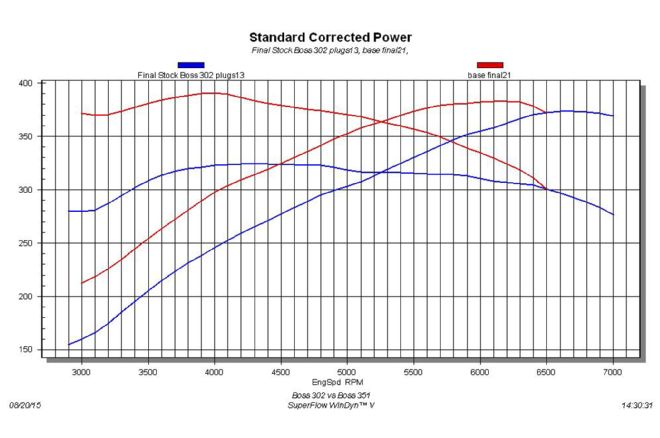
We have to give credit where credit is due: the Boss 302 lived up to its legendary status by posting impressive power numbers. With headers and an optimized tune on the 750-cfm Holley carb, the 5.0L wonder engine pumped out 374 hp and 324 lb-ft of torque. For Boss fans, know this was a solid 17 hp more than the equally legendary DZ302 offered by Chevrolet (tested in the same configuration). Compared to the larger Boss 351, the smaller 302 was down by 9 horsepower, as the 351 produced 383 hp and 391 lb/ft of torque. Though 9 horsepower might not seem like much given the difference of 49 ci, the difference was much more significant lower in the rev range, where the Boss 351 offered an extra 90 lb-ft of torque.

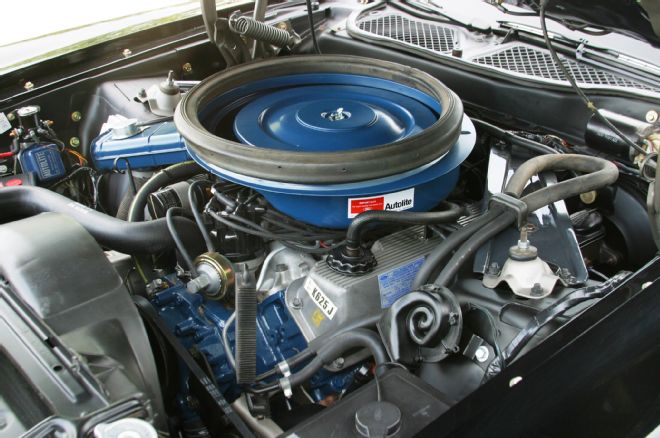
We got Boss on Boss action and its 302 versus 351 with one question: who’s the Boss?
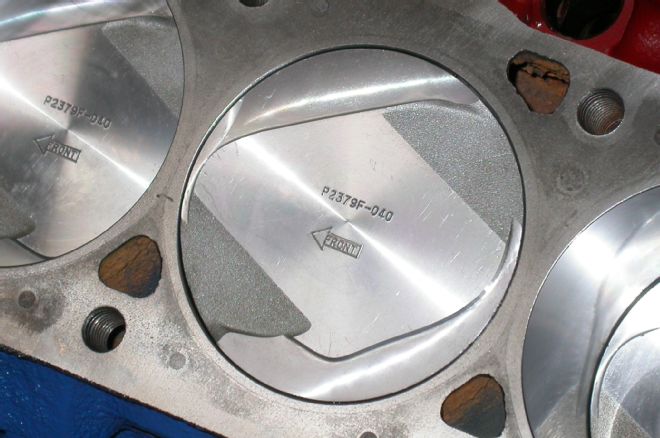
The Boss 302 build included these forged pistons from Probe Racing. The small dome combined with the 4V Boss heads to produce a static compression ratio of 10.5:1.
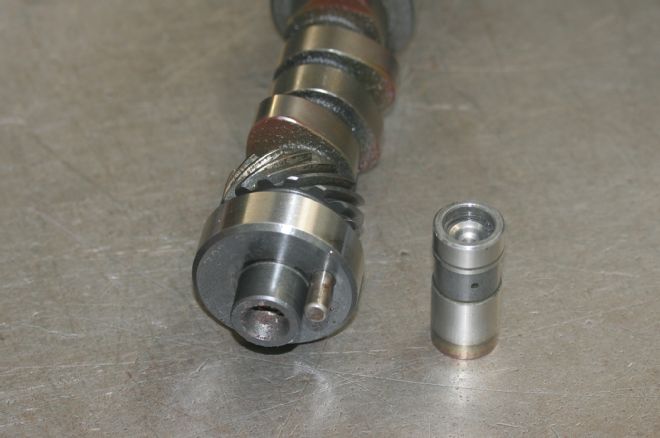
This reproduction Boss 302 cam came from Elgin, while the solid lifters came from COMP Cams. The cam offered 0.514-inch lift (with 1.73-rato rockers minus lash) and 230 degrees of duration (measured at 0.050).
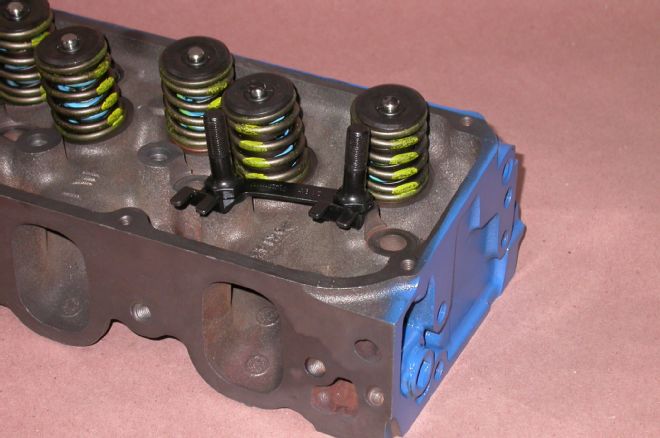
What really put the Boss in the Boss 302 was the use of high-flow, canted-valve Cleveland cylinder heads. Put into perspective, the cavernous 242cc ports on these Boss heads flowed almost 50 cfm more than the comparable DZ302 Chevrolet engine.
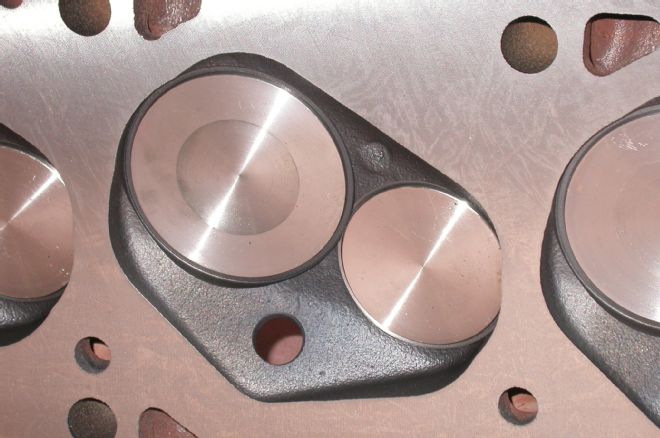
The Boss 302 was blessed with 59cc combustion chambers and valve sizing equal to what Chevrolet used on their big-block. Can a 302 really take advantage of a 2.19/1.71 valve package, let alone the larger 2.25 valves used in the 1969 version?
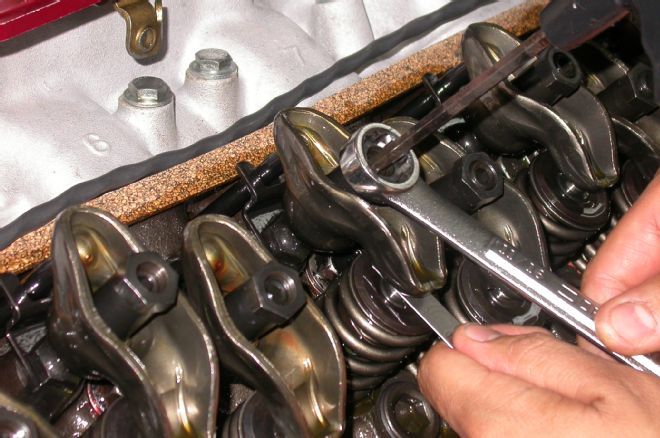
The solid-lifter cam required valve adjustments. We replaced the factory pinch nuts with poly locks to ensure the rockers would not back off during testing (a common problem with the factory pinch nuts).
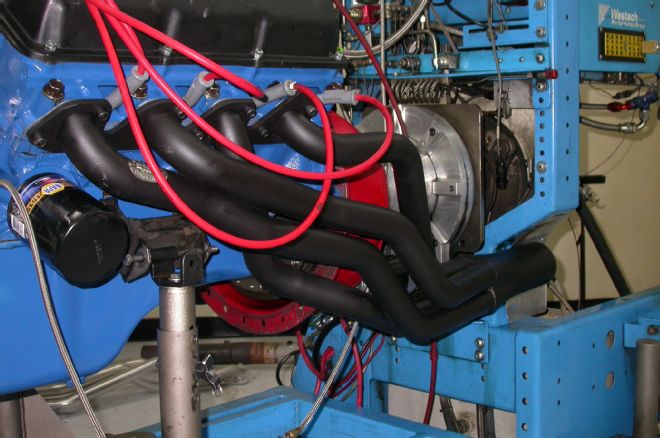
Since we did not have access to factory exhaust manifolds for either engine, we selected a set of headers instead. Hooker supplied these 1 7/8-inch Super Comp headers designed for the Boss 302 chassis.
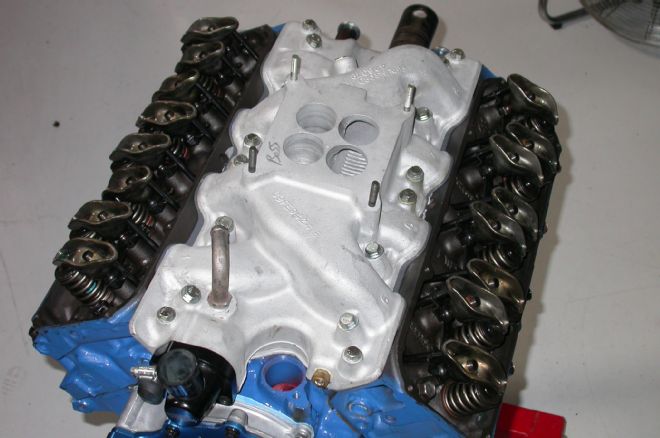
Feeding the Boss 302 was a factory aluminum, dual-plane intake on loan from the great guys at Holman Moody.
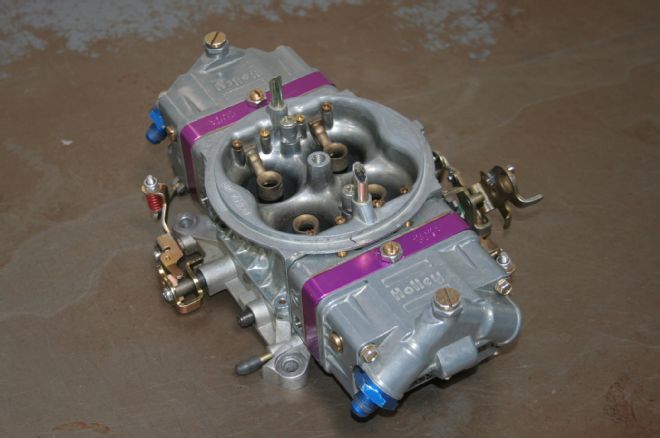
Rather than rely on an expensive reproduction Boss carb (780-cfm Holley), we installed this Holley 750-cfm HP unit. The Holley was equipped with a Percy’s Adjust-a-Jet system that allowed for external fuel adjustments.
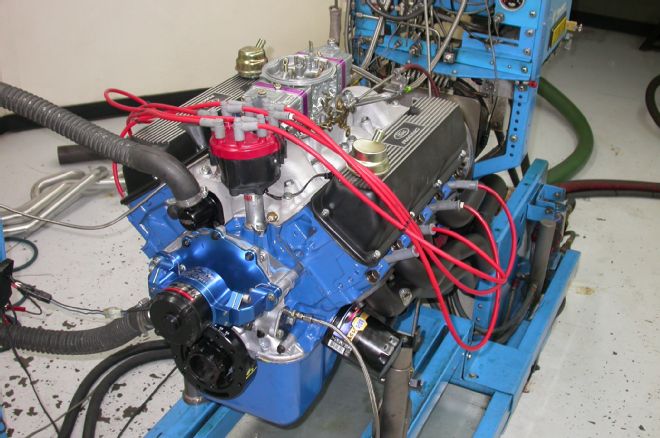
Run on the dyno with the Hooker headers, Holley carb, and MSD distributor, the amazing little Boss 302 pumped out 374 hp at 6,700 rpm and 324 lb-ft of torque at 4,300 rpm.
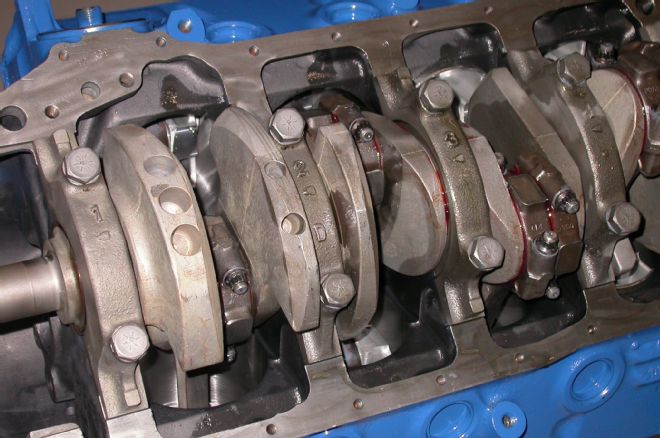
Starting out life as a two-bolt, 2V 351 Cleveland, the block was bored 0.030-over before installation of the cast crank and factory rods. The rods were shot-peened and upgraded with ARP rod bolts.
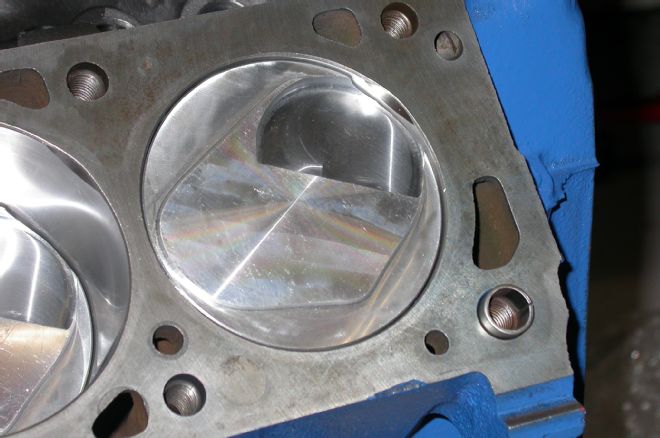
Probe Racing also supplied a set of forged, 11.0:1 domed pistons for the Boss 351.
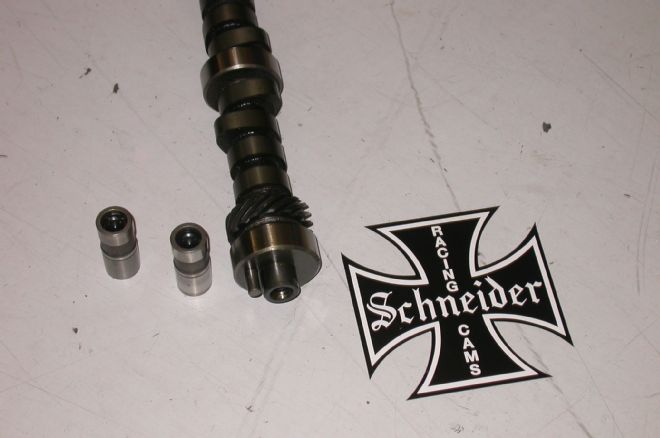
Schneider Racing Cams stepped up to supply the reproduction Boss 351 cam. Despite sharing a similar head configuration, the Cleveland cam will not work in the Windsor-based, Boss 302.
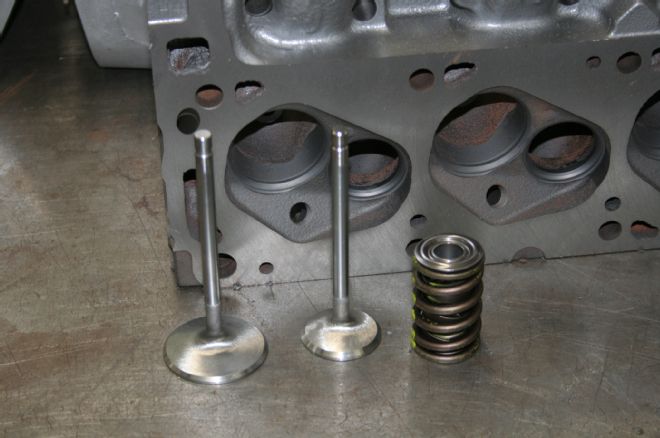
Like the Boss 302, the Boss 351 featured small-chamber, canted-valve heads equipped with a 2.19/1.71 valve package. Since the 4V Cleveland heads had seen more than their fair share of miles and abuse, we also upgraded the valvesprings with units from COMP Cams.
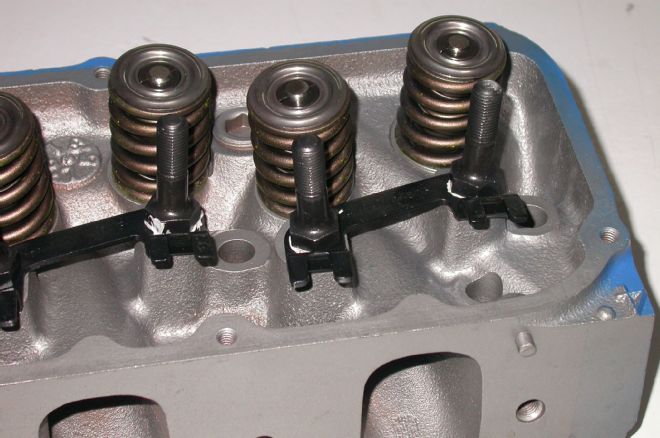
The 4V heads used for this test shared the exact same combustion chambers and port volume and flow with the Boss heads, and lacked only the adjustable valvetrain. The guys at L&R Automotive not only surfaced the heads and touched up the valve job, they also milled and drilled the rocker pads to accept rocker studs and guideplates.
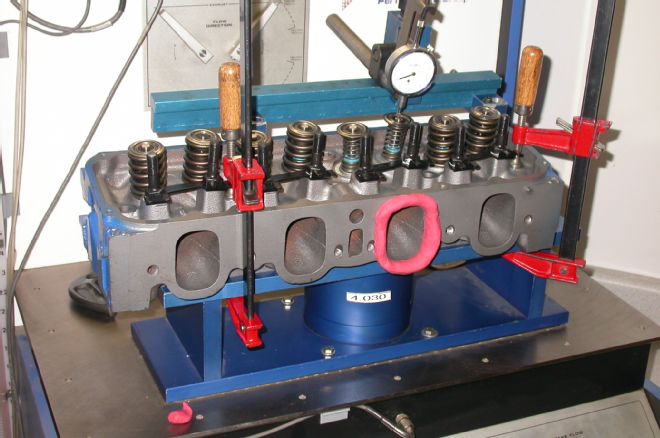
It is easy to see why the Chevrolet camp was envious of the massive Cleveland ports. Flowed at 0.600-inch lift (beyond the lift range of the factory cam) the intake ports flowed an amazing 274 cfm!
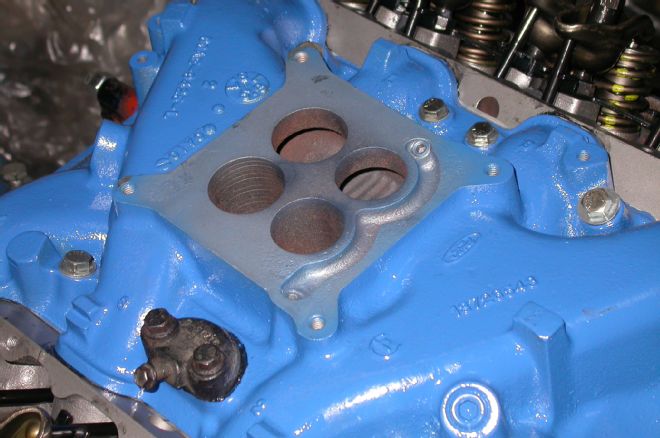
Since we couldn’t get our hands on the very-rare, factory aluminum intake, we substituted this iron 4V version in its place. According to our data, the aluminum version offered only a weight savings, as the two were said to be internally identical.
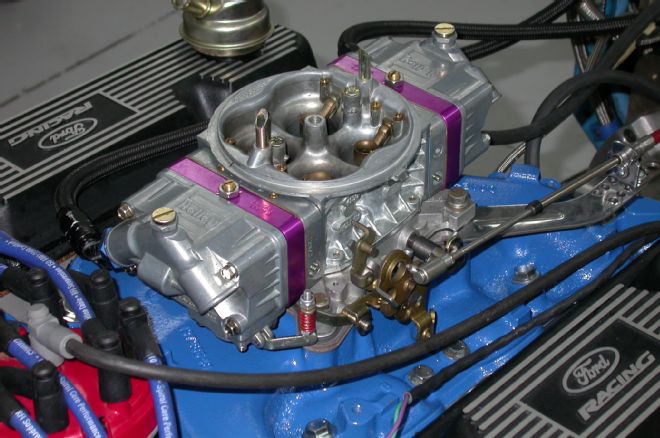
Though the Boss 351 originally came with an Autolite 4300-D carburetor, our testing was run with the same 750-cfm HP Holley carb used on the Boss 302.
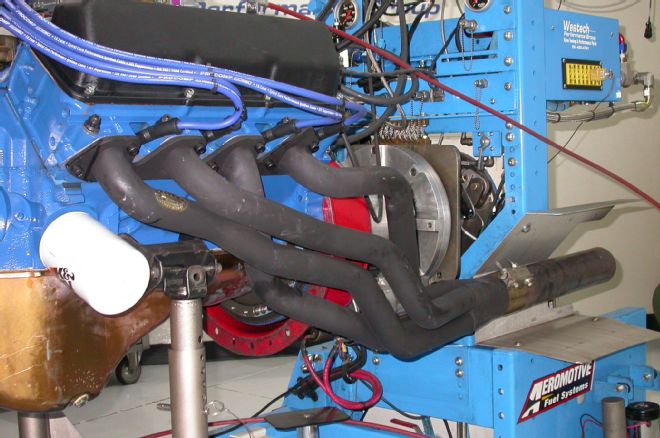
The Hooker headers run on the smaller 302 were employed once again on the Boss 351.
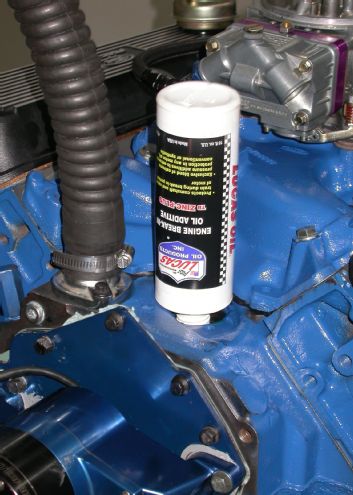
Both solid flat-tappet Boss cams (and COMP lifters) were treated to high-zinc, engine break-in oil additive from Lucas Oil.
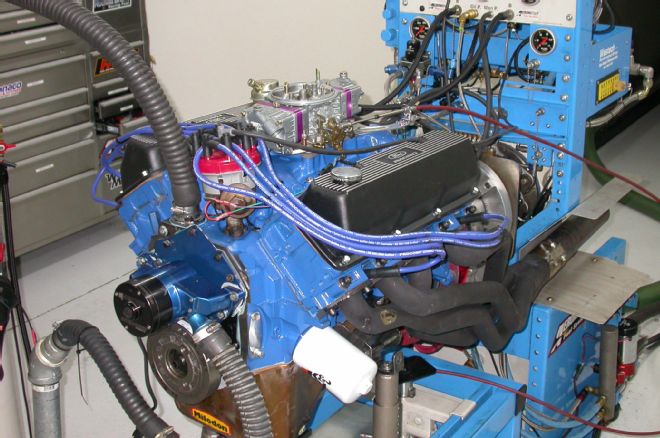
It was awesome to see and hear these legendary Ford engines run in anger, and the Boss 351 demonstrated its worth by producing 383 hp and 391 lb-ft of torque. This output made it not only more powerful than the Boss 302 (by 9 hp), but arguably the most powerful muscle car small-block ever offered!